Photography awards usually presents a platform for creators to present their illustrations to the public to inspire and create light of their activities which otherwise will remain oblivious. It spurs up an environment in which creators interact with their peers and the audience in view of their photographic exploits and ingenuity. Such event was hosted and curated by the Engineering and Physical Sciences Research Council (EPSRC).
THE ORGANISATION
The EPSRC is an agency for engineering and physical sciences research. It is the UK’s main agency for funding research in engineering and physical sciences. It hopes to elevate the UK to the echelon stage in the world to carry out research, discovery and innovation in sciences. EPSRC invests around Є800 million each year in research in a broad range of subjects- from mathematics to material sciences, and from information technology to structural engineering.
THE COMPETITION
Every year, the agency hosts science photography, which according to Professor Tom Rodden, EPSRC Deputy Chief Executive, helps to engage the public with the research they fund in hope of sparking interest amongst people, young and old. Professor Dame Ann Dowling – President of the Royal Academy of Engineering, said: “The photographs submitted demonstrates the sheer breadth of the technical areas being funded and the opportunities for real change for people, businesses and society through the innovations that are coming from this work.” He added “Not only do we have really strong, attractive photographs, the stories behind them about the research and why it is being done are inspiring”.
THE PRIZE WINNINGS
The competition is grouped into five categories
• Equipment and Facililities.
• Eureka and Discovery.
• People and Skills.
• Innovation.
• Weird and Wonderful
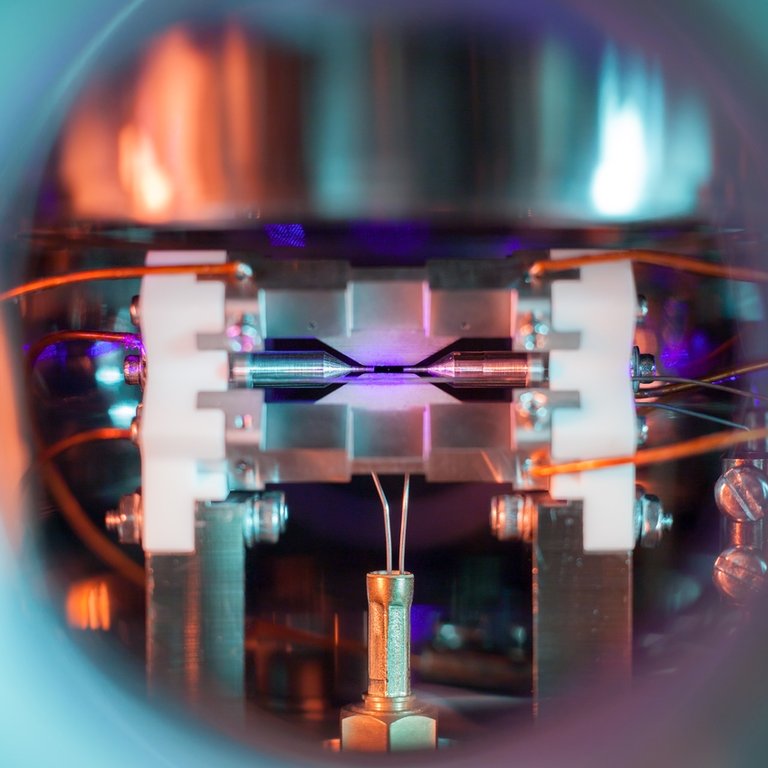
Image credit: David Nadlinger – University of Oxford.
The overall winning image came from David Nadlinger, whose photo, “single atom in a ion trap”, it was within the Equipment and Facility category. The image was captured through the window of a vacuum chamber in an oxford laboratory, using an ordinary digital camera on a long exposure shot. The image bested over 100 entries to claim the first place overall in the photographic competition.
The image shows two needle tips two millimeters apart, and a small blue dot, which is the atom. In the image, a single positively charged strontium atom is held nearly motionless by an electric field emanating from the metal electrodes surrounding it.
When illuminated by a laser of the right blue-violet color, the atom absorbs and re-emits light particles sufficiently quickly for an ordinary camera to capture it in a long exposure photograph. Such principles of atomic suspension are applicable to the sciences of quantum clocks, and utilized as building blocks for future quantum computers.
Other top photographs within the categories includes:
• Nature’s nano-sized net for capturing colour
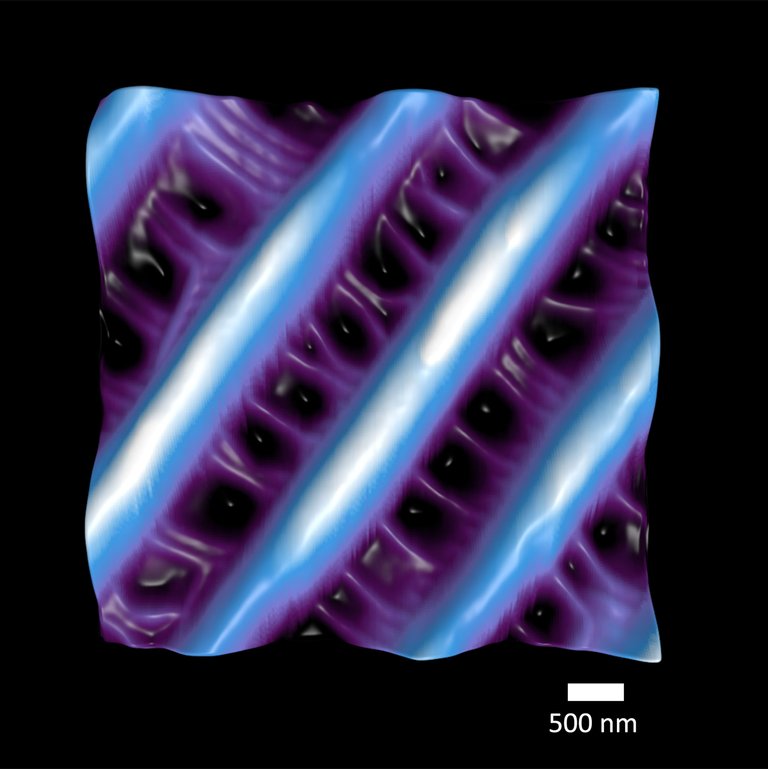
First prize in the Weird and Wonderful category (Bernice Akpinar/Imperial College London/EPSRC)
This picture, taken using an Atomic Forces Microscope, shows the surface of a butterfly wing and the ridges that trap sunlight and produce a dazzling array of colors. The ridges in the picture are one micron in height and connected by a series of cross-ribs which trap incident light, producing a color whose brilliance never fades.
• Placental pop art
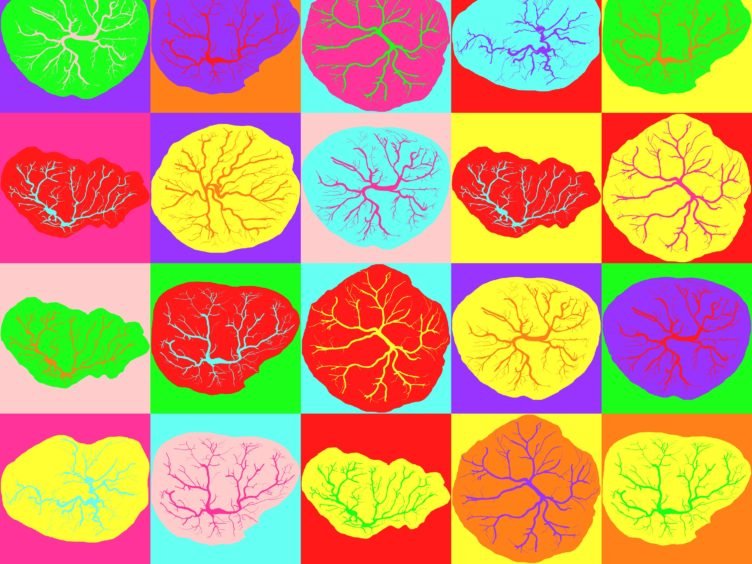
Second place in the Weird and Wonderful category (Dr Rosalind Aughwane/UCL/EPSRC)
This colorful image is described as placental “pop art”. These images show automatically segmented chorionic vascular trees obtained from high resolution photography.
• Just mud, or the future sustainable concrete?

Third place in the Weird and Wonderful category (Alastair Marsh/University of Bath/EPSRC)
This picture shows mud – highlighting its potential as the future sustainable concrete. Researchers believe that mud has the potential as a construction material to help house the world’s growing population in a sustainable manner, and are looking to see how it could replace concrete blocks that are used for much of the current new housing around the globe.
• In a kitchen far far away…

First prize in the Eureka and Discovery category (Mr Li Shen/Imperial College London/EPSRC)
This picture was taken in a kitchen using two Quality Street tins, an oven tray, parts of a Tesco water bottle, a piece of transparency paper, Fairy Liquid, a builder’s lamp and a DSLR camera, and shows two vastly different physicalf phenomena studied in the research into how foams form and behave in lubricants and products like drinks.
• Biodegradable microbowls could help fight stubborn cancers
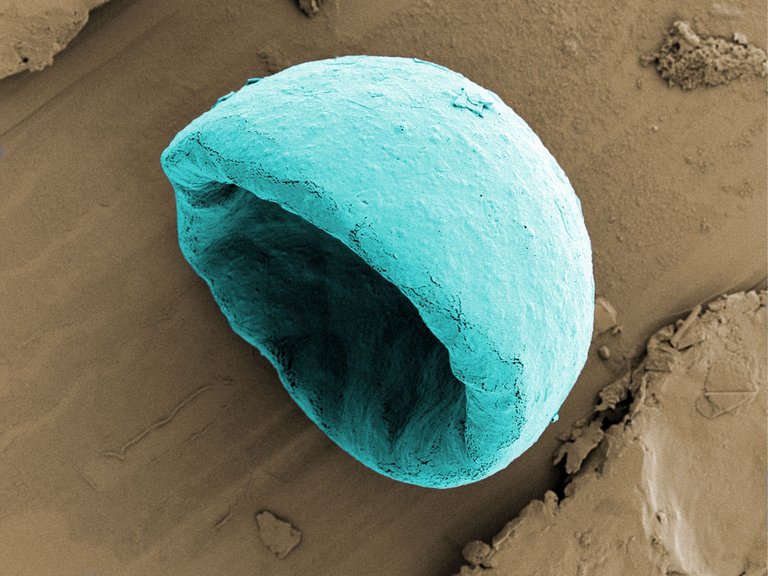
Second place in the Eureka and Discovery category (Tayo Sanders II/Institute of Biomedical Engineering/University of Oxford/EPSRC)
This photograph shows a biodegradable microbowl which could help fight stubborn cancers. The bowl-shaped particles are injected along with the anti-tumour drugs and could help them penetrate further into the diseased area after ultrasound is applied as it encourage gas bubbles to oscillate and carry the drug deeper.
• An in-vitro 3D tissue engineered model of neuromuscular junction formation
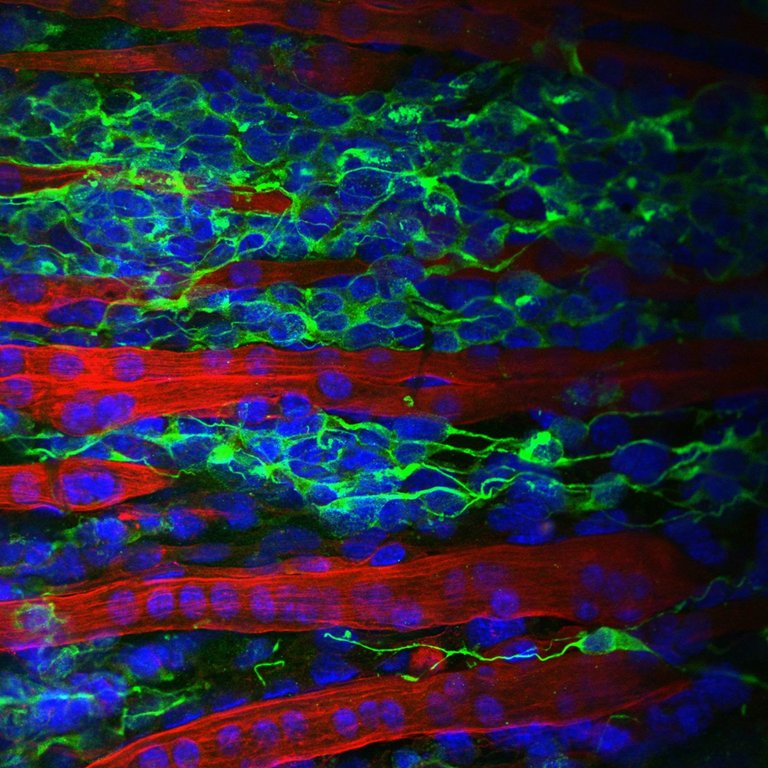
Third place in the Eureka and Discovery category (Andrew Capel/Loughborough University/EPSRC)
This photograph is of an in-vitro 3D tissue engineered model of neuromuscular junction formation which helps scientists understand how neurodegenerative disorders such as amyotrophic lateral sclerosis (ALS), Parkinson’s or Alzheimer’s progress within a human. Traditionally this testing is done through the use of animal models, which are not only ethically questionable, but do not accurately represent the unique physiology of a human being.
• Microbubble for drug delivery
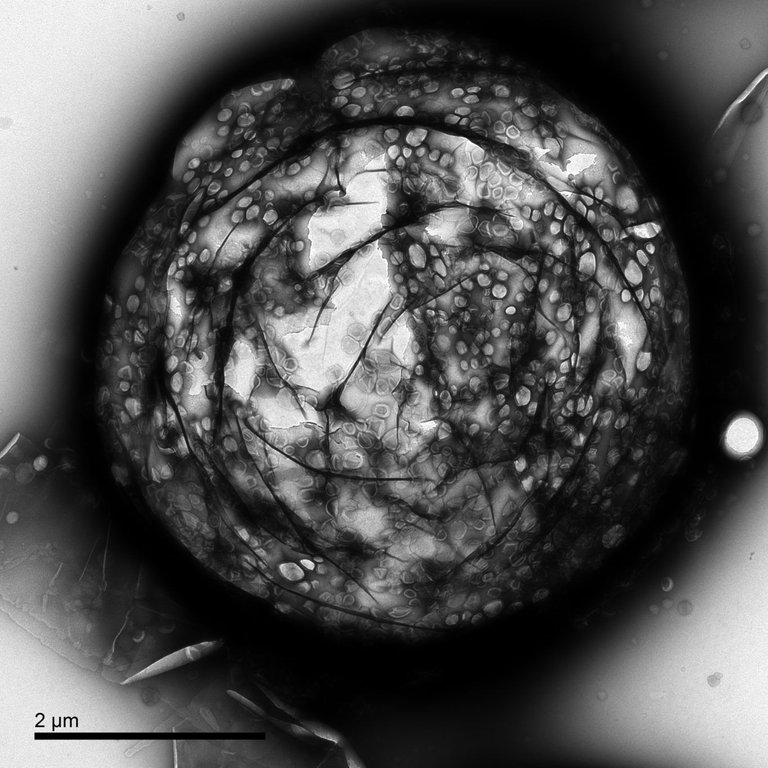
First prize in the Innovation category (Estelle Beguin/University of Oxford/EPSRC)
This electron microscope image shows a microbubble coated with nano-sized liposomes containing a drug. The technology is used to enhance the contrast of ultrasound diagnostic images and is also being explored for therapeutic applications and to improve the delivery of drugs to diseased targets such as tumours.
• High throughput screening: In search of serendipity

Second place in the Innovation category (Dr Mahetab Amer/University of Nottingham/EPSRC)
This picture shows the screening of hundreds of polymers to investigate their material properties and how these can influence human stem cells’ ability to turn into bone cells. The ability of cells to attach to materials is an essential step towards the discovery of new biomaterials for growing stem cells.
• Building blocks for a lighter future
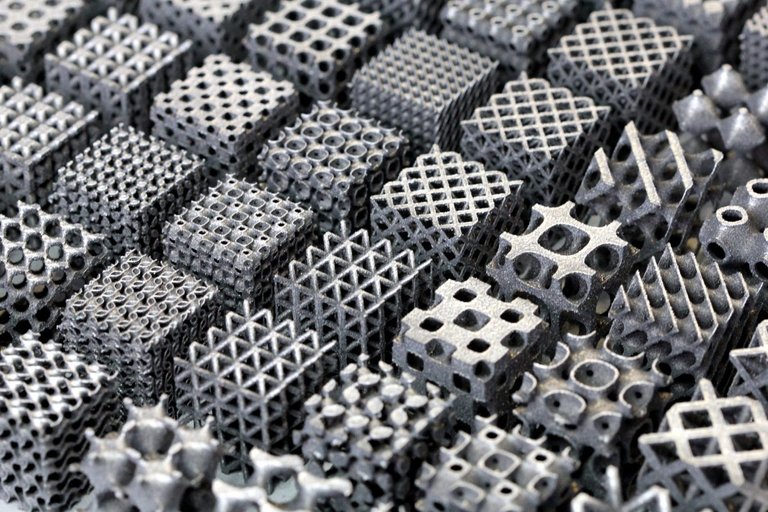
Third place in the Innovations category (Sam Catchpole Smith/University of Nottingham/EPSRC)
This picture shows aluminum building blocks. The lattice structures manufactured via selective laser melting – a type of additive manufacturing or 3D printing – have exceptional strength and stiffness, allowing engineers to significantly reduce the weight of components.
• Searching for simulated Fukushima fuel debris using an AVEXIS ROV
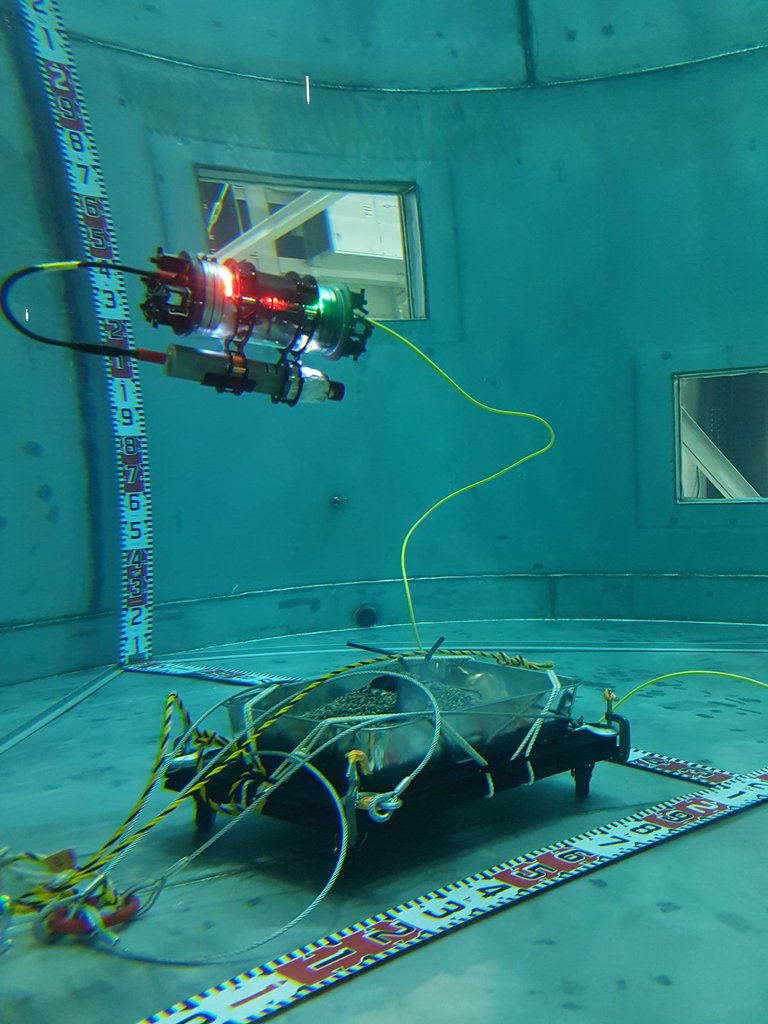
Second place in the Equipment and Facilities catgeory (Dr Simon Watson/University of Manchester/EPSRC)
This photograph shows an AVEXIS Remotely Operated Vehicle (ROV) with acoustic sonar, searching for simulated fuel debris at the bottom of a test pond. The research project is investigating how to localise and identify fuel debris within the Primary Containment Vessel (PCV) at the Fukushima Daiichi nuclear power plant, using a combination of radiation detection payloads and acoustic sonar, mounted on a state-of-the-art ROV.
• Molecular beam epitaxy machine
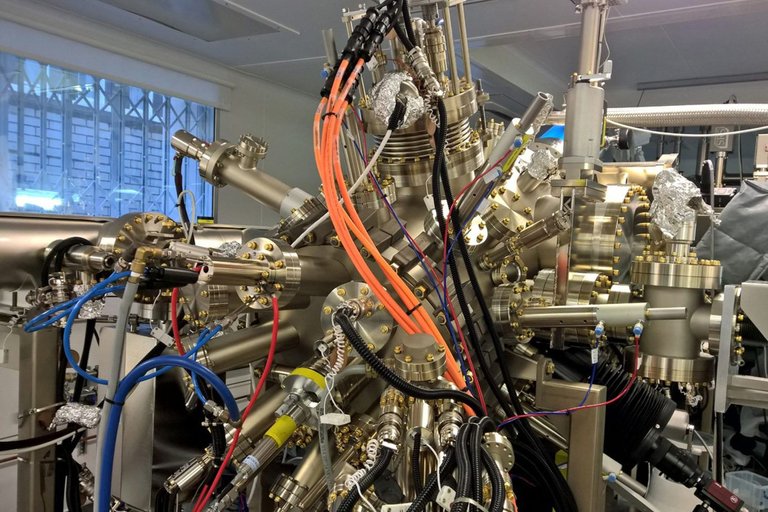
Third place in the Equipment and Facilities category (Claudia Gonzalez E Burguete/UCL/EPSRC)
This picture shows a Molecular beam epitaxy machine. The machine creates tailor-made wafers by depositing thin-film crystal layers over the substrate in a single crystal layer-based system. The wafer is the base used in electronics for the fabrication of the integrate circuits, which were traditionally made of silicon.
• Spiderman on George IV Bridge
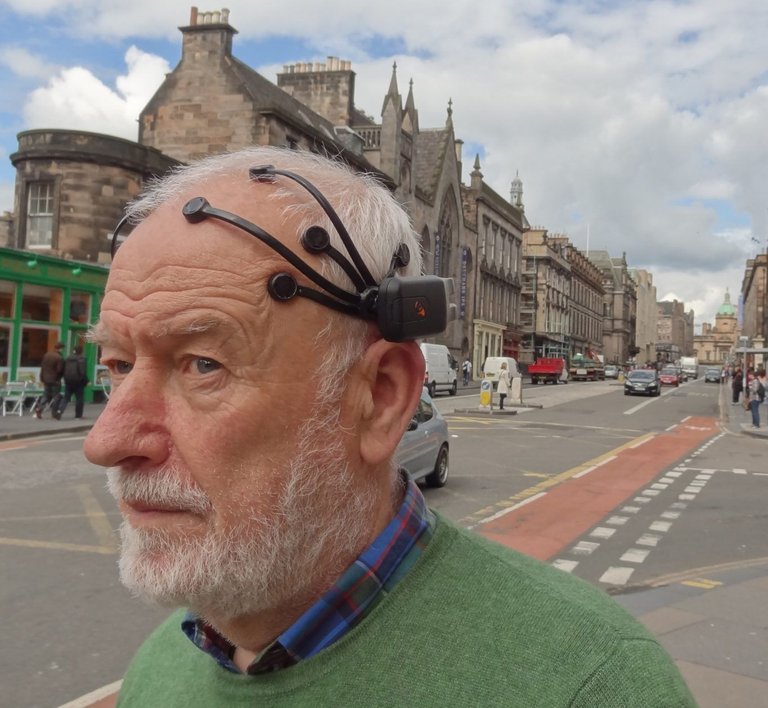
First prize in the People and Skills category (Richard Coyne/University of Edinburgh/EPSRC)
This picture shows a volunteer – affectionately named “Spiderman” because of his headgear – wearing an EEG headset as he walks along George IV Bridge, a busy thoroughfare just off the Royal Mile in Edinburgh. Rarely used outdoors before this project, EEG (Electroencephalography) is a way of recording brain activity. Following the successful pilot, researchers used EEG to measure the neural responses of 95 people aged over 65 to different outdoor urban environments, from busy roads to a quiet park.
• Lady’s Finger crop – benefits of smart irrigation
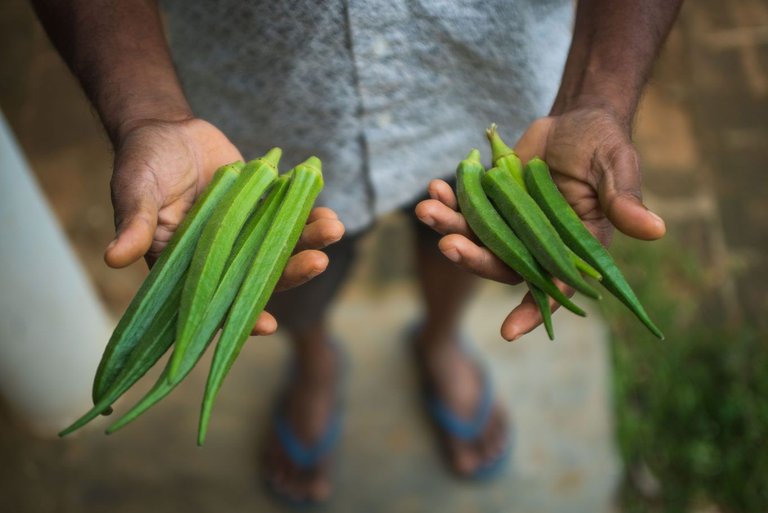
Second place in the People and Skills category (Lucy Bryden/Heriot Watt University/EPSRC)
This picture shows the fruits from two Lady’s Finger (Okra) crops grown in India for the same length of time, showing the benefits on the left of smart irrigation. The smart automated system in Buddha Garden, India, combines a highly localised weather forecast with local know-how on irrigation needs and soil conditions, to produce a “right time, right volume” approach to micro-irrigation which has increased yields by 100%, reduced water and energy consumption by 82% as well as labour and composting requirements
• Robo_selfie
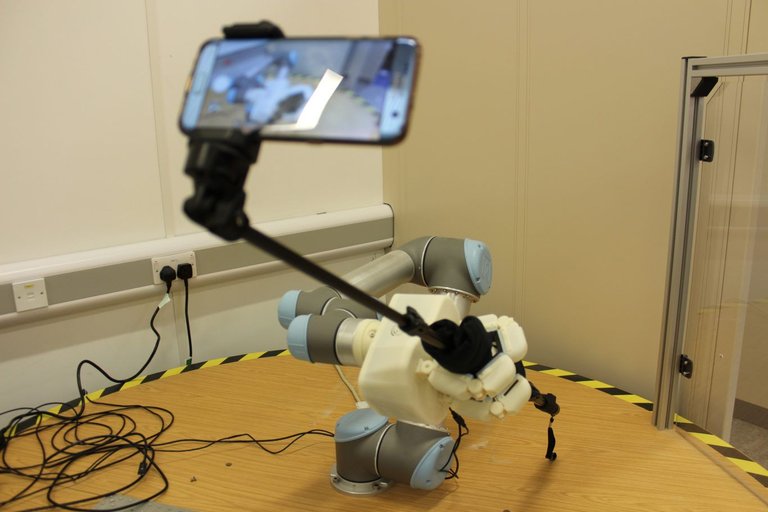
Third place in the People and Skills category (Luke Cramphorn/University of Bristol Robotic Laboratory/EPSRC)
This picture shows a robot taking a selfie. The newly designed, seven-degrees-of-freedom tactile manipulator has a hand with six TacTip sensors and demonstrates how a smartphone is one of many objects that the robot is capable of holding.
References:
EPSRC
eveningexpress
The guardian

2.95% @pushup from @osita
Thanks
Hi! I am a robot. I just upvoted you! I found similar content that readers might be interested in:
https://luxoraleader.com/15-breathtaking-images-you-need-to-see-from-the-epsrc-annual-science-photography-competition/713827/
Busted!!!
This post has received a 0.62 % upvote from @booster thanks to: @osita.
You got a 0.98% upvote from @postpromoter courtesy of @osita!
Want to promote your posts too? Check out the Steem Bot Tracker websitevote for @yabapmatt for witness! for more info. If you would like to support the development of @postpromoter and the bot tracker please